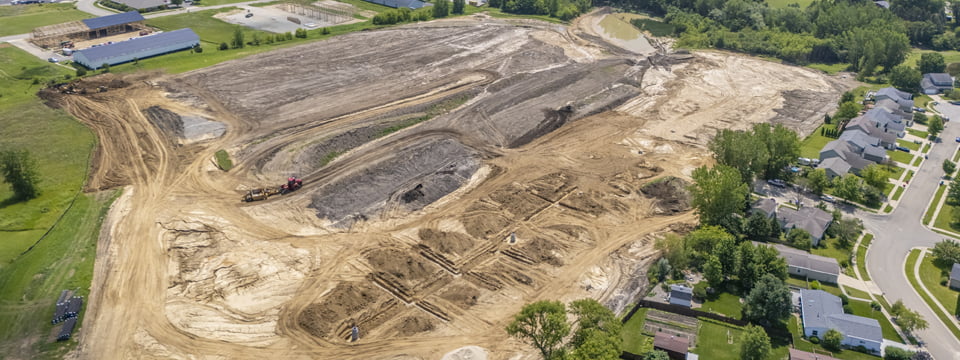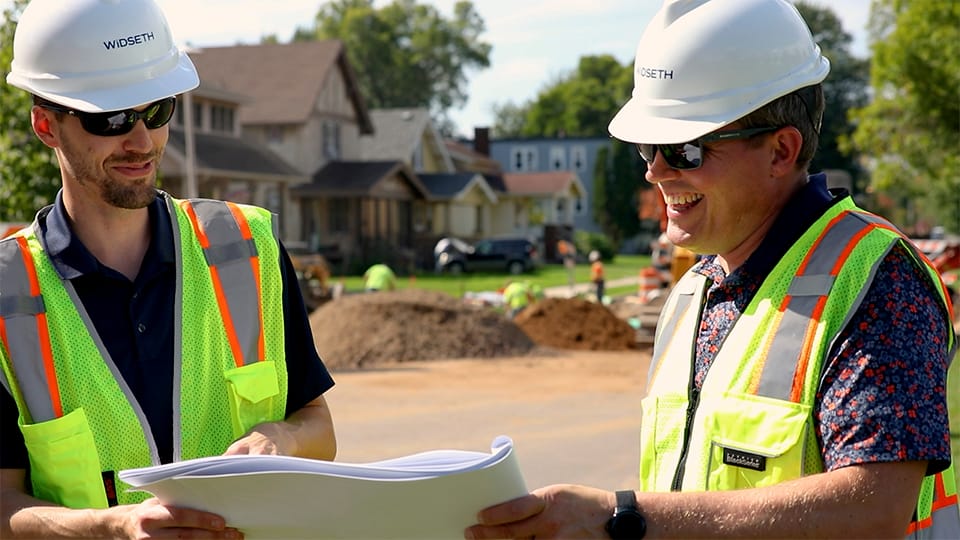State and federal laws require that certain projects undergo environmental review prior to beginning construction, with the goal of ensuring that the proposed project will not create unnecessary negative impacts to the surrounding environment. The level of review required is determined by the nature and size of the proposed project, its location, and funding sources.
Projects that constitute a federal action (i.e., those that use federal land, federal tax dollars, or are under federal agency jurisdiction) are required to comply with the National Environmental Policy Act of 1969 (NEPA) and other relevant federal environmental laws. Examples include transportation projects funded through Federal Highway Administration (FHWA) or Federal Transit Administration (FTA) programs, rural development projects receiving grants from the U.S. Department of Agriculture (USDA), Federal Emergency Management Agency (FEMA) disaster recovery projects, or housing projects with assistance from the U.S. Department of Housing and Urban Development (HUD).
Typical environmental review process
- Assess existing and proposed conditions.
- Evaluate alternatives.
- Solicit comments from stakeholders and regulatory agencies with project-specific or environmental interests. In some cases, the local newspaper may publish a notice, or the project developer may work with the local planning commission to hold a public hearing that will ensure public awareness and provide an additional forum for comments.
- Prepare a written environmental review record. Appropriate responses to all comments received from the public and regulatory agencies providing oversight of the process are documented in the written environmental review record.
- Evaluate the project’s potential to impact environmental resources and issue a Record of Decision (ROD) by the lead agency or responsible government unit (RGU) tasked with conducting the environmental review.
There are three levels of environmental review under the National Environmental Policy act:
Categorical Exclusion (CATEX): Actions that normally do not have a significant effect on the human environment may be “categorically excluded” from detailed environmental analysis. Reasons for exclusion are detailed in NEPA procedures adopted by the lead federal agency.
Projects that involve no or minimal alterations in the physical environment or occur on previously disturbed land are often processed through a Programmatic Categorical Exclusion (PCE) – a condensed version of a CATEX that uses a checklist-type form. Bridge rehabilitation projects or utility installations within existing right-of-way (ROW) often qualify for PCEs. Larger or more complex projects may require an Environmental Report (ER) that summarizes the potential impacts of proposed activities and develops any necessary avoidance, minimization, and mitigation measures.
Environmental Assessment (EA): In cases where a CATEX does not apply, an EA may be prepared to determine the project’s potential for significant environmental impacts. The EA is intended to be “brief but thorough” and typically includes discussion of the purpose and need for the project, environmental impacts of the proposed action and reasonable alternatives, and a listing of agencies/persons consulted. EAs must also be made available to the public and undergo a 30-day comment period.
Based on the EA and any comments received, the agency can either conclude the review process and issue a Finding of No Significant Impact (FONSI) or request additional investigation and preparation of an Environmental Impact Statement.
Environmental Impact Statement (EIS): If the proposed action is determined to significantly affect the quality of the natural or human environment, an EIS must be prepared. This level of review is reserved for major undertakings, such as construction of a new power plant or expansion of mining operations. The EIS presents a detailed analysis of the key environmental, social, and economic issues that are likely to result from the project and examines if there are alternative project designs or locations that would result in fewer impacts. Direct, indirect, and cumulative impacts are evaluated for each alternative, including the “no-build” alternative. The EIS also provides information on mitigation measures needed to help reduce adverse impacts. Opportunities for public comment on the EIS are included throughout the review process.

Many states, including Minnesota, have legislated their own environmental review requirements for projects not covered by NEPA, such as those being funded or carried out by state or local governments. The Minnesota Environmental Policy Act of 1973 (MEPA) established the Environmental Quality Board (EQB), which oversees the state’s environmental review program and formulates rules and procedures for the review process. These rules include exemption categories—similar to categorical exclusions—and specific thresholds that trigger mandatory preparation of an EIS.
Additional review documents that may be required:
Environmental Assessment Worksheet (EAW): This document consists of a list of 22 questions designed to summarize the basic facts of a proposed project and its potential for significant environmental impacts. The EAW provides decision-makers with information to guide permitting and approvals, promote public awareness, and determine whether the project requires an EIS. Projects that meet or exceed mandatory thresholds listed in MN Rules Part 4410.4300 are required to submit an EAW. An EAW can also be initiated at the discretion of the project proposer or RGU under MN Rules Part 4410.4100. Both mandatory and discretionary EAWs are distributed to appropriate state and federal agencies and made available to the public for a 30-day comment period.
The Environmental Information Worksheet (EIW), a slight variation of the EAW, is used by the Minnesota Department of Health (MDH) and the Minnesota Pollution Control Agency (MPCA), respectively, for Drinking Water Revolving Fund (DWRF) and Clean Water Revolving Fund (CWRF) projects. Because these funds are provided through partnerships with the U.S. Environmental Protection Agency (EPA), review of these projects must comply with both state and federal laws.
Alternative Urban Areawide Review (AUAR): For incremental impacts related to a series of anticipated development projects in a specific geographic area, a substitute for an EAW or EIS is the AUAR. This type of review document uses a standard list of questions designed to look at the cumulative impacts of different development scenarios in a single review process. The AUAR can be used as a planning tool for local governments to understand in advance how development will affect the environment within their community. Qualifying projects will not be subject to individual environmental reviews if designers conform to AUAR assumptions and mitigation plan requirements. Any city, county, or township which has adopted a comprehensive plan that covers the area to be reviewed can utilize the AUAR process.

Regardless of the type of environmental review document being prepared, work should begin as early in the planning process as possible to avoid delays in permitting/approvals, release of funds, or project construction. Because of mandatory waiting periods for comments from regulatory agencies and the public, environmental reviews typically take several months to complete. However, it is important to have an accurate project definition and to know what type of environmental review document is required prior to beginning the review process. If initiated too early and project scope, design, or location change significantly, it could trigger a higher level of environmental review and/or require steps in the review process to be repeated.
Widseth’s environmental team is experienced in performing environmental reviews at all levels and adept at tailoring the process to meet the unique needs of a variety of projects, while ensuring compliance with NEPA and MEPA regulations. Contact us to discuss how we can assist with review of your project!




